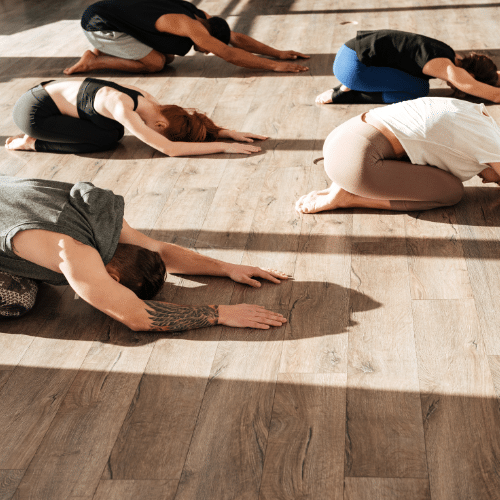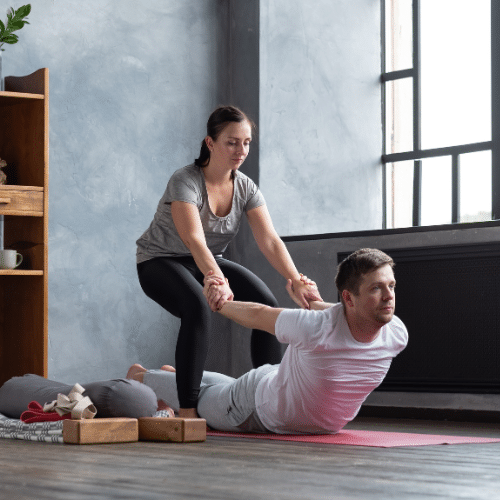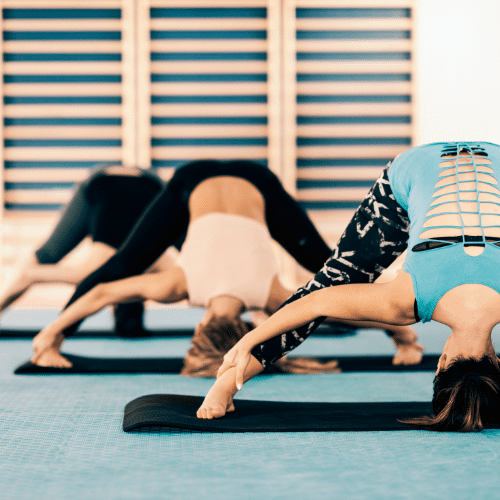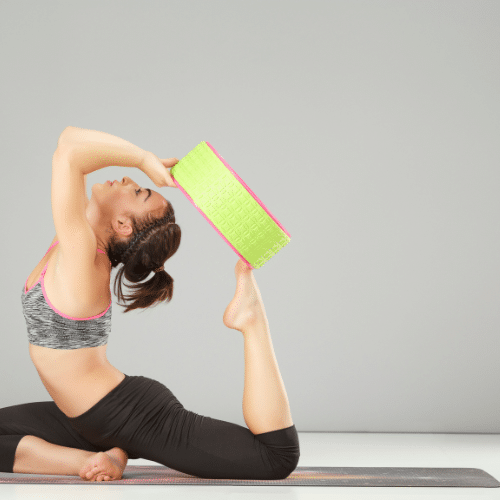Yoga is minimalistic in many ways, but minimalism doesn’t have to mean “zero gear.” Besides the block and mat, one addition to the gym bag can be a pair of yoga socks!
Yoga socks come in different types, and each one has features that can help any yoga practitioner in the studio. As well, these socks deliver a range of benefits that go beyond keeping the feet warm. These special socks also provide cushioning and traction, getting their wearers in the right frame of mind to hit Asana after Asana.
Care to learn more? Read our definitive guide to yoga socks, types, and why they’re the perfect addition to any yogi’s gym bag!
What Are Yoga Socks? How Do They Differ From Regular Socks?
Yoga socks consist of cloth, rubber, and even plastic in some instances. The non-cloth components of these socks will usually be on the soles. These give the socks their grip and traction — benefits that allow yoga practitioners to remain stable in certain positions.
The non-cloth materials that go into socks for yoga distinguish them from ordinary socks. Regular socks come as a continuous weaving of cotton or another type of cloth.
Regular socks lack rubberized or plastic soles, so they aren’t the best for stability and traction. Think twice before coming to a yoga class in regular socks!
The Benefits of Wearing Yoga Socks
Contrary to popular belief, socks for yoga aren’t just articles of clothing. Like yoga pants or tights, they serve a more crucial purpose beyond covering the feet. Here are the benefits of wearing special socks for yoga:
Warmth
Sure, warmth isn’t a problem in a Bickram Yoga class, but for every other kind of yoga, practitioners can do with some extra insulation — something yoga socks offer in spades.
Socks specific to yoga can provide their wearers warmth if a yoga mat’s insulation doesn’t suffice. By providing warmth, these socks protect practitioners from breaking focus due to cold feet.
Maintained Circulation
The feet are distal parts of the body prone to decreased blood flow. Beginners are the most sensitive to changes in circulation since they haven’t developed a tolerance for certain positions.
One of the ways to offset this is with clothing that offers compression and warmth. No other article of clothing fits this better than yoga socks!
Better Traction
Indeed, yoga is nothing like sprinting a hundred yards or rock climbing. However, it’s still helpful to have footwear that offers grip and traction.
Certain yoga positions like Downward Dog and Bridge Pose demand a firm placement of the feet. When the feet become too sweaty, they can become slippery, causing the practitioner to lose footing during these poses.
The socks you wear for yoga have rubber or polyurethane soles that add traction to the feet. The rough soles ensure that the feet have a firm grip on the ground, allowing practitioners to assume positions with balance and safety.
Hygiene
The hygienic benefits of these socks work for both the wearer and the studio. They can protect the wearer’s feet from dirt or dust. In particular, these special socks provide crucial protection for diabetics whose feet are more prone to infections.
The yoga studio can also benefit from its members wearing socks. Socks prevent sweat from collecting on the floor, ensuring a safe, healthy, and sanitary environment for everyone.
Coverage for Those Who Can’t Go Barefoot
Some yoga practitioners aren’t comfortable being barefoot outside their homes. For this group, yoga specific socks provide familiar coverage for the feet without the bulk of sandals or shoes.
Cushioning Without Bulkiness
Some yoga positions cause bony body parts like the ankles to rub against the floor. Some students or practitioners find such poses too painful to do — even when using a yoga mat. Yoga socks that are long enough to extend past the ankle provide cushioning that can make poses like the Butterfly Pose more bearable.
The Different Types of Yoga Socks
Yoga socks traditionally come in two main varieties. Over the years, companies have manufactured traditional socks in different lengths to cater to various tastes.
Grip Socks or Non Slip Socks
Grip socks are below-the-ankle socks with rubberized or plastic soles that provide traction. These types of socks also cover the feet, making them one of the most common in any yoga studio.
Non slip socks are excellent for poses that demand stability. Some of the positions these socks will come in handy in are the Bridge Pose, Warrior Pose, and the Downward Dog Pose.
Heel Socks
Heel socks go by another name — open-toe socks. As the name suggests, these socks cover the heel but leave the toes exposed.
The toe exposure of heel socks allows wearers more freedom in foot movement. Besides added mobility, open-toe socks boast better ventilation than grip socks. Nevertheless, heel socks also have rubber or plastic soles for traction, like grip socks.
Long Yoga Socks
Manufacturers have come up with socks that extend past the ankles. These socks provide insulation and compression.
An additional benefit of these longer socks is the cushion they provide bony parts like the ankles and the lower shins. The cushioning these socks provide makes certain positions more accessible and bearable to beginner practitioners.
Long yoga-socks come in closed or open-toe varieties. They also come with rubberized soles for grip.
How To Wash Yoga Socks
Just like any piece of clothing, yoga socks require careful washing. To prevent damaging these socks, follow these steps:
1. Turn the Socks Inside Out
This will preserve the rubberized soles. Turning the socks inside out also exposes the inner aspects of the socks, which are likely the dirtiest.
2. Wash Them at 104°F
104ºF is the optimum temperature for most fabrics. Washing yoga-socks at this temperature ensures that the fibers and stitching remain intact and last longer.
When washing your special socks at this temperature, avoid using bleach. Regular fabric conditioner and laundry detergent will suffice.
3. Hang Them To Dry
Due to the rubberized or plastic soles, putting yoga-socks in the dryer isn’t a good idea. Instead, let the socks air dry to preserve the soles from warping.
Get a Pair and Test Them Out!
Yoga socks can be a fine addition to your athleisure collection. Grab your pair and test them out in Sacramento. Try 30 days and take the next steps towards a more Zen and healthier you!









